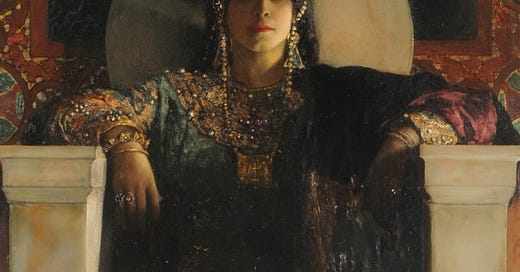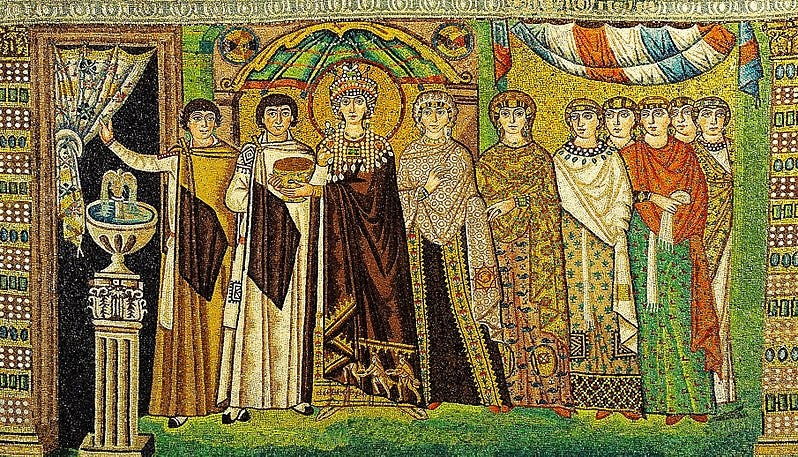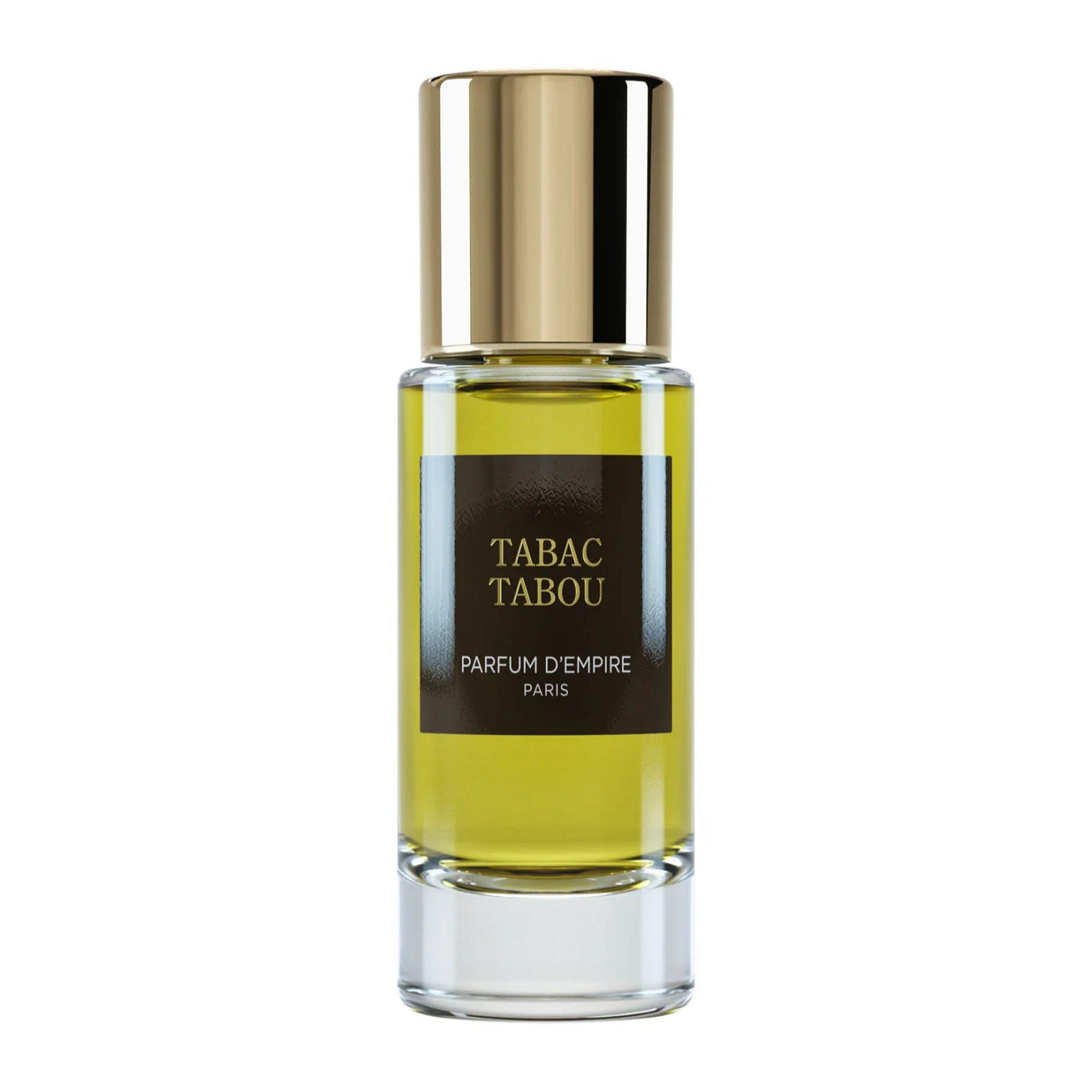If you’re passionate about history as I am you will no doubt have particular topics you love more than any other - history is, unfortunately, too big to love them all equally. In general I have the same taste in history as that guy you know who listens to four hour podcasts on the political origins of WWI or the strategic policy goals of the Napoleonic regime.
I’ve got bookshelves filled with maps about books and books about maps, and tucked into its own half-shelf are all my books about Byzantium.
The Byzantine Empire is a name we anachronistically gave the Eastern Roman Empire because there were way too many civilizations calling themselves Roman who weren’t actually ruling from Rome that it got very confusing. This is ironic because the Byzantine empire lasted a lot longer than the Roman one, hobbling along for a millennium until the fall of Constantinople to the Ottomans in 1453.
The flight of art, literature, and people from the empire at the time is what brought Homer, Plato, and classicism back to Europe and started the Renaissance. The artists went west and the priests went east, establishing Muscovy as the new heart of Eastern Roman Christianity, which we now call Orthodoxy. Important and mostly forgotten is how I would describe Byzantium.
But if you’ve interest it is a fascinating and compelling world to explore. Spanning the same time period as the contentiously named ‘dark ages’ and the rise of Islam, Byzantium was the connective tissue between the ancient and dawning modern world.
The council of Nicaea, which codified the Nicene creed still spoken by millions of people today, was heralded by Constantine. The first legal systems, which form the basis for civil law today, were codified in Byzantine libraries. The walls of Constantinople held back Atilla. When Europe fell into barbarian migrations and feudalism, for a while there Byzantium flourished in the Mediterranean sun.
The absolute high period of Byzantine history is tied to the building of the Hagia Sophia and to two people: Justinian and Theodora.
Justinian was the most dazzling emperor of Byzantium, a Roman ruler who could proudly stand alongside Augustus and Constantine as one of the great men of history. Theodora was his wife by choice and not arrangement, a former actress and sex worker who became the most powerful empress in the world for twenty years.
Their story is one of the great chapters of history. It has everything: court politics, sabotage and betrayals; military conquest and reconquest; riots, plagues, and famine; the hubris of an emperor who thought he could rebuild Rome brick by brick and the tragedy of a last gasp of greatness before the slow and inevitable fall.
What we know of Justinian and Theodora mostly comes from the writing of Procopius, who lived at the time and served with Belisarius, Byzantium’s famed general. Procopius wrote The History of the Wars as a kind of official recounting of the era. Then, in one of the greatest moves of pettiness in all history, he wrote The Secret History and filled with all the scandalous rumour, gossip, and bitchy callouts of Justinian, Theodora, Belisarius and Belisarius’ wife Antonina that he could think of.
In the deeply religious culture of Byzantium, Procopius’ portrait of Theodora was meant to be incendiary. He writes her as brilliant and shrewd, the true power behind the throne, a woman who clawed her way to power from the bottom of Byzantine society and held it both through her husband and in her own right.
Theodora was a Miaphysite, one of the subsets of early Christianity that flourished in Byzantium and is frankly too tedious and doctrinal to explain here. It was considered heretical, though, adding to the controversy of her rise to power - basically like a flat earther becoming head of state over a firmly round-earther kingdom.
Regardless, though he was certainly a round-earther there’s little doubt that Justinian loved Theodora. When they met before he was emperor there was a law preventing high ranking nobility from marrying actresses, so Justinian had the law changed. They ruled together; when their lives were threatened in the Nika riots, it was Justinian who wanted to flee Constantinople and Theodora who told him she would rather die than take off the royal purple and abandon the throne.
They stayed.
Theodora died young and Justinian outlived her for twenty years, never marrying again.
There’s so much to love about High Byzantium. In this world religion was politics and people argued about the interpretations of doctrine in the street. The hippodrome was the centre of society and supporters of different chariot racing teams were almost gangs that ruled the lower parts of the city and inspired loyalty that often spilled out into violence when a race went sour.
We know just enough about this place, this fifteen-hundred-year-old world, to know how different it was. But we can also see how similar it seems to our world, too. The smell of church incense, and people selling fruit and flowers on the street. Finishing work for the day and going to the stadium to watch your team compete. Wearing their colours.
The Byzantines loved mosaics. The most famous images of Justinian and Theodora are from the Basilica of San Vitale in Ravenna, which has a series of mosaics that has survived to the modern day. These mosaics are golden and warm, showing emperor and empress in elaborate headdresses made of gold and pearls.
They have the flat, soulful faces of Russian icons (and Justinian and Theodora were later turned into saints). Belisarius is there too. The mosaics are hagiographical, built to celebrate the Italian reconquest, but they also show us what power looked like to these people - the gold, the mosaics of Christ and the Apostles bleeding into the fresco of Justinian. The Tyrian purple.
When I think about Byzantium, I think about sunshine and gold and blood in the hippodrome and figs in honey. It’s a feeling more than anything, a world I’ve constructed in my head to make the history three dimensional.
So you can imagine how surprised I felt when I sprayed a perfume and my brain immediately said, ‘That’s the smell of the Palatium Magnum. That’s the smell of Theodora.’
The perfume in question is Tabac Tabou from Parfums d’Empire. This house is well worth your attention. Created by independent perfumer Marc-Antoine Corticchiato, Empire’s scents play in the world of traditional French structures with a refreshing air of unconventionality.
You won’t find a traditional amber or fougere from this house; you will find perfumes called amber and fougere that will challenge you.
The same is true of Tabac Tabou, which is not a tobacco at all but is in fact something much more interesting: a narcissus-immortelle. There are no two materials more evocative of the Mediterranean than labdanum and immortelle, and the Corsican-raised Corticchiato is fond of both.
Tabou is a thick, honeyed yellow floral which relies on the weird, compelling maple syrup dustiness of immortelle to give it edge and also depth.
There is so much narcissus in the opening of this perfume that upon smelling it I felt as if I had been flung back to the lakeside to voyeuristically watch the man fall in love with himself. The opening of Tabac Tabou must be how Echo felt trudging miserably after Narcissus, consumed with him. It is almost dewy, this floral note, though still dry and powdery enough that it plays into this perfume’s central theme of golden warmth.
The scent’s honey note here is strong enough to give Tabac Tabou a prowling animalism, the sort of teeth-bearing challenge that all floral animalics seem to be growling at you. I am not often a fan of honey notes in perfume, which often give me a cloying feeling of paranoia, but here the honey is mellow and refined. I would almost say it’s watered down, more a feeling on the back of the palate than a huge, overbearing sweetness up front.
All of these notes sing in good harmony with the eponymous tobacco. But I feel like Tabac Tabou’s name is a sleight of hand, or maybe just good marketing because tobacco scents always seem to sell better than other genres. It’s not a tobacco, or at least not just a tobacco. It’s something far cleverer than that. There’s dryness but not the dusty hay of coumarin; sweetness but not the saccharine bite of a gourmand.
Tabac Tabou smells fully formed, a perfume with the confident swagger of maturity, polished but not so refined that it has lost its animalic edge.
There is violence in this perfume, but also great beauty, and underneath it all a sort of warm familiarity like the light that shines in beams through your window during the most golden moments of sunset.
And I think it is that golden-warm feeling that fired a synapse in my brain connecting it to my Byzantium. A place and a perfume that both have beauty and violence and meditation and chaos interwoven into a rich a tapestry. Into a mosaic.
Justinian and Theodora have faded into the pages of history. They live in the pages of Procopius now, a palimpsest of the true reality of their lives. We can tell ourselves any story we want with them as characters - but they were people, once. They had bodies like yours and mine. They ate and slept and laughed and screamed - and they were dyed in the purple, rich as all heaven would allow, so they probably wore perfume too.
It was five or six hours into the drydown of Tabac Tabou, when all that was left was warm, dry immortelle and a touch of tobacco smoke, and the afternoon sun was shining into the west window of my house. I was sitting at my computer trying to write but not focused at all, distracted, my coffee getting colder.
But I wasn’t unhappy - quite the opposite. I was thinking about how lovely it was to catch a perfume at the exact moment of its half-life in the exact right time of the day, when the light matched the way it smelled. When everything around me was golden like a halo of light.
And I thought about an old line from an old poem, preserved for us by the scribes of Constantinople:
‘If any can paint the sheen of the sun, he will paint the sheen of Theodora.’ ▣








Loved this post! Bringing together perfume and Byzantine history is *chefs kiss* for this nerd. Gotta ask - have you read Sailing to Sarantium and Lord of Emperors by Guy Gabriel Kay? They are set at exactly this time period (though not *exactly* Byzantium, it’s basically the same).
Gorgeous writing blending perfumery and history. There’s a thread of writing there for sure. Rose, cardamom, lemon. All the oils and abstracts, and how they’ve been used over long time.